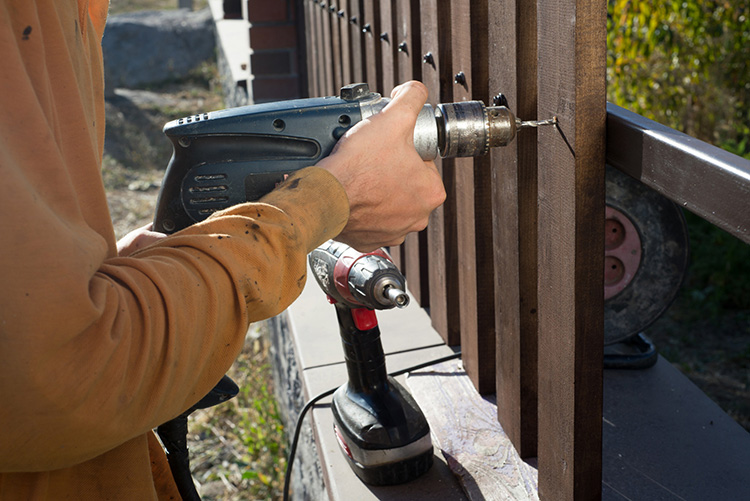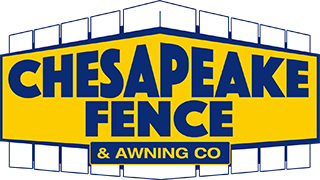DIY Fence: A Complete Installation and Repair Guide
A fence can be a sizable investment, so it’s important to handle installation right and make sure you’re doing everything in your power to extend the life of your fence. Luckily, there’s plenty you can do to keep the exterior of your home in tip-top shape, even if you have a DIY fence.
Building and maintaining wood fencing (or any types of fencing) can be a sizable undertaking and knowing not only where to start, but what to use, can be daunting. We’re here with the only guide you’ll ever need for fence installation, so keep reading to learn the ins and outs of posts, pickets, and perfection.
Things You Can Do to Prolong the Life of Your Fence
If you already have a good fence in place, there’s no need to rip it all up and start from scratch, but it’s important to maintain what you have in place. There are a couple of things you can do to ensure your existing structures don’t deteriorate further. To start, you’ll want to focus on annual maintenance.
At least once every year, take a walk around the entirety of your fence and look for signs of rotting, warping boards, failing posts, cracking wood, and loose nails. If you find any areas of concern, fix, or replace them as soon as possible. This should help further damage from spreading. During this annual walk, clear out any vines and shrubbery hindering your view. This will also help protect your fence.
Second, make sure you’re giving your fence a good clean every couple of years. If you have one, use a pressure washer to get rid of stubborn grime and dirt, and reseal it immediately once dry. This will not only add years of life to your fence but get it looking brand new. Finally, watch out for common pests like powder-post beetles, carpenter ants, and termites.
Common Supplies Needed to Repair Your Fence
If you have spotted any issues in your fence, you’ll need to invest in a couple of necessary tools, though it’s all the better for it if you have them already. The key supplies you’ll need are an:
- Electric drill
- A post digger or auger
- A digging bar
- A shovel
- Plenty of drill bits
- A hammer
- A pair of pliers
- A wheelbarrow or wagon
- Safety equipment (goggles and hearing protection)
The value of DIY is that it’s cheaper. But cheaper doesn’t always mean better, so if you are buying tools for this, make sure you’re getting quality equipment. If you don’t have a cordless drill, get one. We can’t stress how much easier they are to work with. Second, make sure your digging tools are sturdy and not damaged, and finally, take care of your wellbeing by ensuring you have the right safety equipment.
If you’re cutting anything, you should always wear safety goggles to protect your eyes from flying debris or splinters.
How Long Should Your Fence Last?
Determining the lifespan of your fence is based entirely on a set of important factors. That being said, there are some basic estimations you can make, primarily based on materials and how much care they get.
For example, wood fences can last anywhere from 10 to 25 years, which is a big difference. It’s all about choosing the right materials for your building process and protecting what you’ve made to ensure you’re getting the most out of your investment. If your material isn’t treated properly, it’s going to deteriorate faster. If it’s not been installed properly, it may warp and crack.
At the end of the day, the durability of your fence is determined by the care it receives during its entire life, from installation to cleaning and repair. Some materials are more durable than others, and we’ll touch on that in a moment, but all fences need care to keep them looking good.
Installing a New DIY Fence

A good fence makes for a good neighbor. An unattractive, flimsy, or poorly made fence won’t make anyone happy (including your neighbors). Alongside that, there are a couple of technicians you should consider before getting started with your work. First, you’ll need to check your local building regulations and homeowner guidelines, as these may dictate the style, size, and placement of your fence.
Following that, you may need to get a permit, so check that before you start anything. While you’re checking things out, discuss your plans with your neighbor, as your fence line will affect theirs. Once you have the approval of all involved, consider your layout. You want to aim for a layout that lets you use full pickets at every corner, and if you intend to install a gate, you’ll need to consider its location. You’ll also want to use full pickets for your gate posts.
Use graph paper and accurate measurements to draw out a plan for your fence. Note important locations like post locations and gate placement. Some areas may need this for the permit, so make sure it’s at the top of your to-do list.
Finally, get yourself a building partner. You’ll likely need an extra set of hands for your fence building project.
Common Supplies Needed to Install a New Fence
While we’ll go into specifics in a moment, let’s look at the basic and most common supplies used in fence installation. These would be the things that not only make your life easier, but every seasoned DIYer should have in their home.
Some of the most common supplies needed to install a new fence are good quality wood (or other materials), and lots of it, plus tools like a drill, nails, hammer, an accurate leveling tool, and an auger. If you’re unsure what an auger is, it’s an indispensable tool as far as fence building supplies go. Essentially, an auger is any kind of tool that has a helical (coiled) shaft, which is great for making consistent and easy holes. Building a fence without one of these is going to be a tough task.
The actual makeup of a fence is simple, though there’s plenty of room to put your own stamp of creativity on it. No matter the design, every wooden fence will have posts, which are strong corner parts. It will also have rails, which provide support to the flatter wooden panels that make up the bulk of the fence, along with a top and bottom rail which lays flat and perpendicular to the post. Most fences will have a finishing piece on the top rail, along with optional final details on the fence posts.
What Materials Are Fence Pieces Made From?
These days fences come in a plethora of materials, ranging from metal to recycled plastics. What you choose will be personal, though each material has its own advantages and disadvantages. Some materials you could use are:
- Cedar wood
- PolyVinyl
- Composite
- Aluminum
- Steel
- Treated wood
- Chain link
Some options are more functional than aesthetic, like chain link fencing. Chain link fences have important uses such as separating areas of land and security. Our focus today is on wood, whether it’s cedar or treated pine. Wood materials are versatile. Many designs can be created using wood materials.
What Is the Most Durable Type of Fence Material?
If we’re talking about longevity, then polyvinyl and aluminum fencing are easily the most durable. Both are water repellent, do not attract insects, and are manufactured in numerous heights, styles and colors. Aluminum and PolyVinyl fences are expected last for up to 30 years with little maintenance needed.
The most popular material used for fencing supplies has to be wood.
For example, pine is less costly but not as sturdy as oak or redwood. There’s more opportunity for variety and style with wood, and it’s one of the easier fencing materials to use in DIY fence installation. If you’re choosing wood, go for something durable and easy to maintain.
What Tools Are Needed to Build a Fence?
Some of the tools needed to install a new fence are the same as the tools needed to repair a fence. Which makes it easier. But you’ll need more than what you’ve got to build a fence from scratch. Here’s our comprehensive list:
- A level (at least 4ft.)
- Air-powered finish nail gun
- Circular saw
- Cordless drill
- Hammer
- Jigsaw
- Bar clamps
- Posthole digger
- Power auger
- Shovel
- Speed square
- Stringline
- Table saw
- Tape measure
- Wheelbarrow
And of course, safety goggles, hardy gloves, and hearing protection. These should be at the top of your list. Again, if you’re buying new equipment, aim for quality. We know it can be expensive to get set up in the tool department (and this alone could be a good enough reason to hire a professional), but you don’t want to risk damaging anything because your tools fail.
A Step-By-Step Guide
Once you’ve gathered your tools, attained the necessary permissions, and planned your layout, it’s time to start building. The number of steps required is going to seem daunting but take them all one at a time and make sure you’re getting each phase right. Finally, remember to measure twice, and cut once. It’s the golden rule of construction and DIY.
Start by:
- Mark your corners and posts
- Prepare the holes (using an auger)
- Set the posts
- Brace the posts
- Anchor the holes with concrete
- Fill the holes and pack them tight
- Mark the rail spots on the posts
- Attach rails, starting from the bottom, top, then middle
- Nail or use brackets to attach horizontal rails
- Attach the boards
- Trim the top posts
- Install any caps and post trims
If you’re installing a gate, be sure to leave a space for it, though you should have marked the necessary posts for its spot. Once the rest of the fence has been installed, you can start with the fence.
Start by cutting and assembling the gate frame before adding the panel boards and screwing on any trim. Once the gate is firmly fixed, space and hinge the gate to the fence. Add a foot latch or other locking mechanism, though we recommend the foot latch to stop the gate from blowing around.
At the end of the day, or a few days, you should have a sturdy, durable fence. It can be a lot of work, and there’s not a lot of room for error, but there is nothing quite as sweet as the satisfaction of a job well done. Where that job becomes time-consuming and overwhelming, professionals are just around the corner to help.
Many (Professional) Hands Make Light Work
When you don’t have the time to make a DIY fence or simply don’t have the expertise, we’re here to get you what you need. We specialize in fences, railings and more, and know what needs to be done to get your fence looking incredible. Making an informed decision about what goes around your home is the key to privacy, safety, and peace of mind.
Don’t neglect the importance of proper maintenance and building. Our company has everything you need to get properly stuck into your fence repair or building endeavor.
Reach out to us today and let’s see what we can do together, even if you just need a little extra help.
